There is a card-bound album in the library of the Warburg Institute inscribed with the portentous title Historical Memorial Pages from Germany’s Hardest Time and Deepest Need. Opening the volume, however, one is greeted by an unexpectedly cheerful spectacle: colourful rectangles of paper arranged in neat little rows, their faces depicting pretty landscapes and villages, and humorous caricatures. These are examples of the Notgeld, or emergency money, that was printed by towns and cities across Germany during the period of inflation that began with the First World War and ended in 1923.
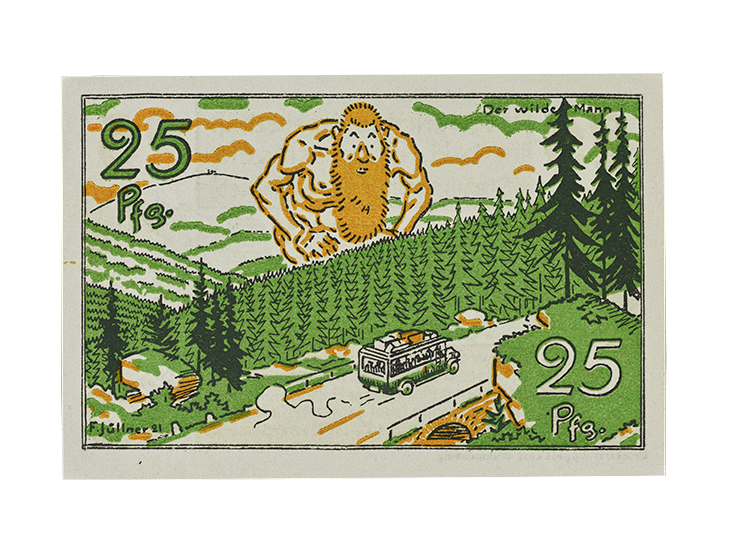
Notgeld issued by the Braunschweig public transport authority, 1921. Photo: © Trustees of the British Museum.
In issuing this ersatz currency, municipalities and businesses hoped at first to compensate for a chronic shortage of small change, which had vanished from circulation thanks to war-spooked hoarders and the government’s withdrawal of coinage for its metallic content. Then, as the appeal of such objects became apparent, special collectible notes were issued by towns desperate for revenue, often in sets and with their rhetoric ramped up to catch the eye of potential buyers. There are retellings of historical and literary episodes across series of notes, including Faustian scenes and a life of Luther – somewhat incongruous, given its medium. In 1922 the government attempted to put a stop to this practice, evidently fearing the damage it was doing to the national economy, but by then it was too late, and, when hyperinflation took hold the next year, notes with huge denominations were issued – sometimes in the billions and trillions.
An exhibition currently on display in the British Museum’s coin gallery plunges visitors into the world of Notgeld, surrounding us with its bewilderingly efflorescent iconography. As well as the charming scenes described above, the emergency of which it was both cause and witness also impinged on the appearance of this money. Besides floods of valueless paper and forlorn figures gazing into empty purses, some examples of Notgeld show macabre figures, scatological jokes and acts of violence. Witches, ghosts and devils stalk these notes, animals vomit and excrete money, heretics are burnt at the stake, and – inevitably, but no less shockingly for that – Jews, who were often blamed for the crisis, are hanged from trees.
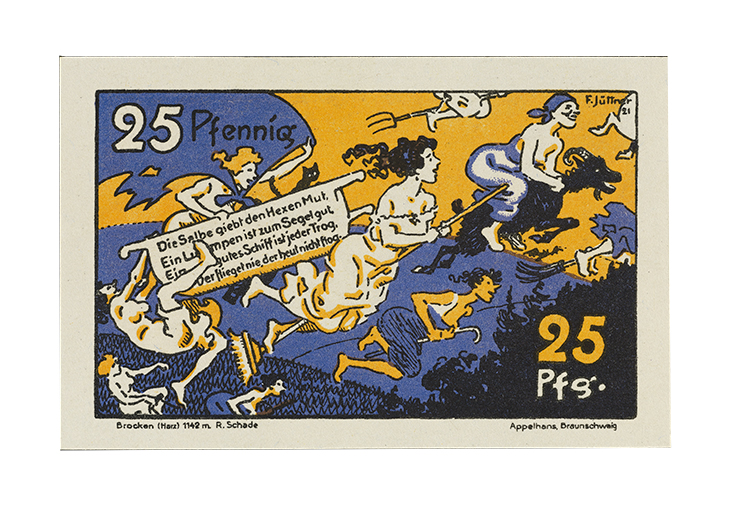
Notgeld from the Harz Mountains, 1921. Photo: © Trustees of the British Museum.
There are also advertisements for the businesses that issued these tokens. One particularly overwrought example shows a donkey – the Dukatenesel from the fairytale ‘Little table, lay yourself!’ – exuding money from both ends. There it is collected by a shabby man in a top hat, presumably a profiteer, and a young woman who lifts her skirt to catch the miraculous draught. In doing so the latter exposes the tops of her stockings, which were a local speciality, while shooting us a coquettish glance. Her Phrygian cap identifies her as Marianne, personification of France; the French were occupying the Ruhr at the time, and greatly resented for what was seen as their extortion of the Germans. The loose morals of the French woman illustrated on this note, who abuses the poor German donkey while simultaneously supporting its stocking manufacturers, sends a mixed message, at once titillating and censorious.
While a few of these designs are of a crude naivety, many were made by professional artists, some of them well-known. The show’s curator Johannes Hartmann has included several notes from a series designed by illustrator Olaf Gulbransson, a frequent contributor to the popular illustrated magazine Simplicissimus. These elegant little images depict among other things a spectral skeleton appearing in Paris, pasting one of that city’s familiar advertising columns with the fateful words ‘mene, mene, tekel upharsin’ (you have been weighed in the balance and found wanting). This warning came back to bite him: Gulbransson’s choleric view of the Allies led to him being ostracised in his native Norway during the Second World War.
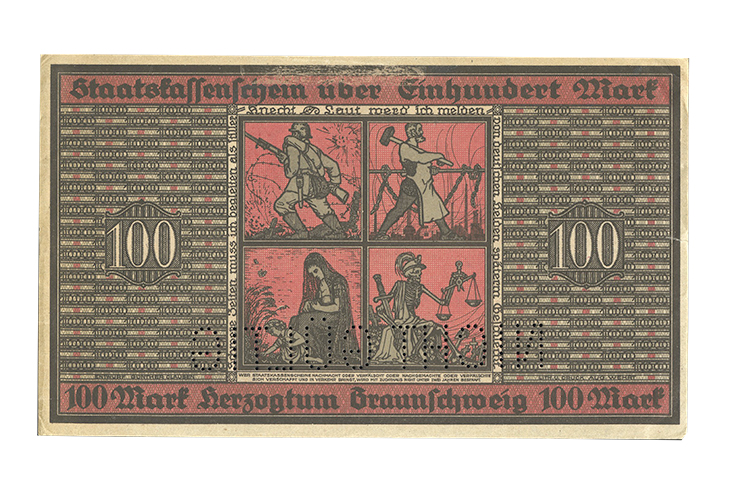
100 Mark Notgeld note from Braunschweig from October 1918. Photo: © Trustees of the British Museum.
Another example included in the show was designed by the future Bauhaus master Herbert Bayer, then a student at the school. This starkly simple note attempts to rationalise an intensely irrational situation by clearing room for the orderly accumulation of zeroes on its sparsely decorated face. In doing so it stands out dramatically from its neighbours, with their jumble of genial and horrific iconography. Bayer was reacting to the fact that the inflation had produced a parallel inflation in the world of images, and this was not just limited to the design of money: artists also printed vast quantities of works on paper in this period, hoping to attract buyers eager to transfer their rapidly devaluing cash into tangible assets. And, just as with Notgeld, this sparked an attention-seeking turn to violent and grotesque imagery – one thinks for instance of the prints produced by George Grosz and Otto Dix at the time. Then, as now, the sleep of economic reason brings forth strange monsters.
‘Currency in crisis: German emergency money 1914–1924’ is at the British Museum, London, until 29 March 2020.
Unlimited access from just $16 every 3 months
Subscribe to get unlimited and exclusive access to the top art stories, interviews and exhibition reviews.


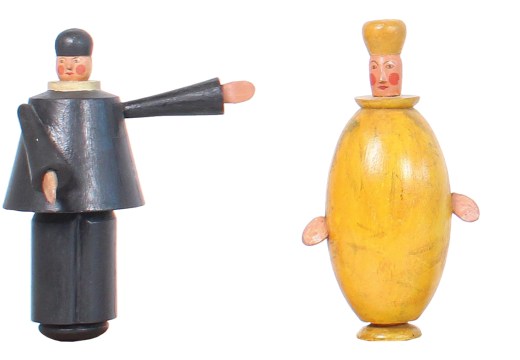
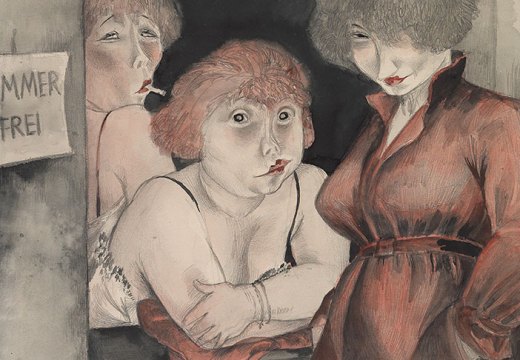
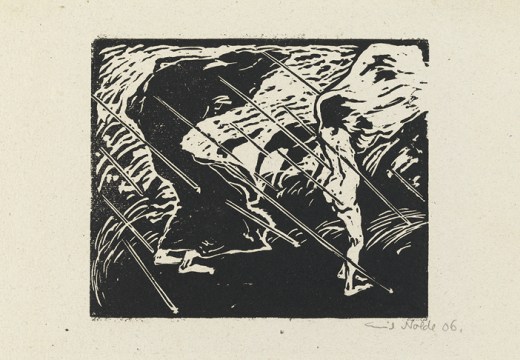









![Masterpiece [Re]discovery 2022. Photo: Ben Fisher Photography, courtesy of Masterpiece London](http://www.apollo-magazine.com/wp-content/uploads/2022/07/MPL2022_4263.jpg)
It’s time for the government of London to return to its rightful home